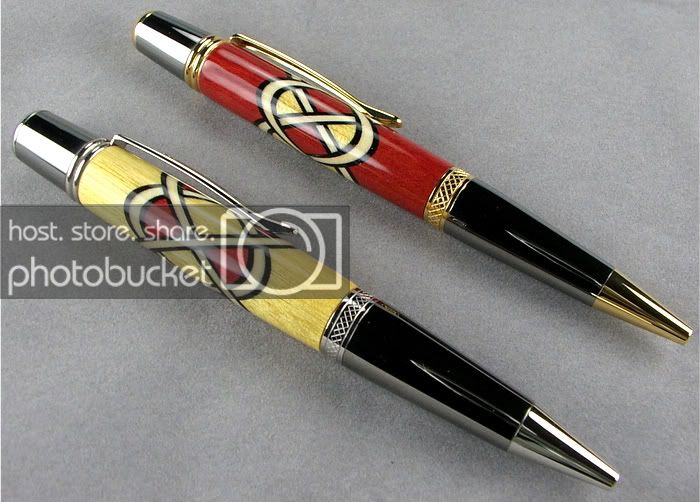jttheclockman
Member
I did not want to hijack Monty's thread so I started this one. I do not make many wood pens but yesterday at my craft show I had a person looking for wood pens. They wanted pens that felt like wood and not with the plastic feel you get with a CA top coat.
My question is for those that do wood pens, how are you finishing them and why??? It has been a proven fact that woods with little or no finish start to look grundgy because of the oils in the hands. But with that said some woods such as burls may look fine or even develop a better patina with age and handeling. How do you feel on this??? I know from using woods that are in the rosewood family have alot of oil in them and can actually be polished to a very high shine with little effort and maybe just a Danish oil finish. The feel of a fine wood is certainly different than a plastic feel and look. I notice alot of people like the feel of my scrollsawn projects and clocks because of the way I finish them and they all have no poly or other plastic finish on them so I am thinking this may or may not be the way to go with pens also. Looking for thoughts.
What is the wooden pen buyer thinking and what have you found to be a better seller when making your wooden pens??? Thanks for the replys. Hopefully the ones that answer can please go into a little detail and maybe add a few thoughts which I have not asked questions about. I am wanting to add some wooden pens to my line for next years shows.
My question is for those that do wood pens, how are you finishing them and why??? It has been a proven fact that woods with little or no finish start to look grundgy because of the oils in the hands. But with that said some woods such as burls may look fine or even develop a better patina with age and handeling. How do you feel on this??? I know from using woods that are in the rosewood family have alot of oil in them and can actually be polished to a very high shine with little effort and maybe just a Danish oil finish. The feel of a fine wood is certainly different than a plastic feel and look. I notice alot of people like the feel of my scrollsawn projects and clocks because of the way I finish them and they all have no poly or other plastic finish on them so I am thinking this may or may not be the way to go with pens also. Looking for thoughts.
What is the wooden pen buyer thinking and what have you found to be a better seller when making your wooden pens??? Thanks for the replys. Hopefully the ones that answer can please go into a little detail and maybe add a few thoughts which I have not asked questions about. I am wanting to add some wooden pens to my line for next years shows.
Last edited:

